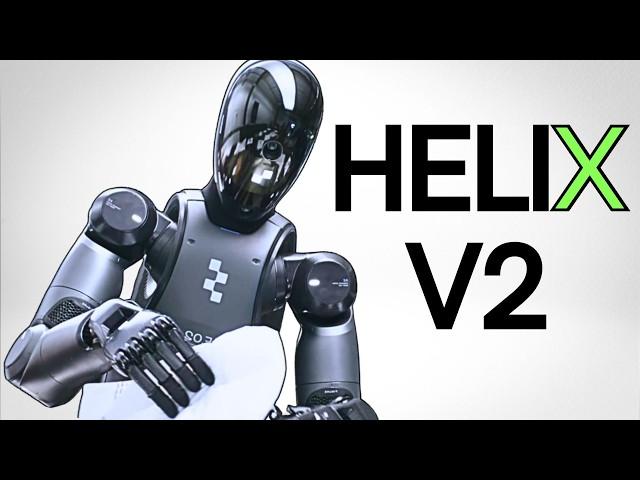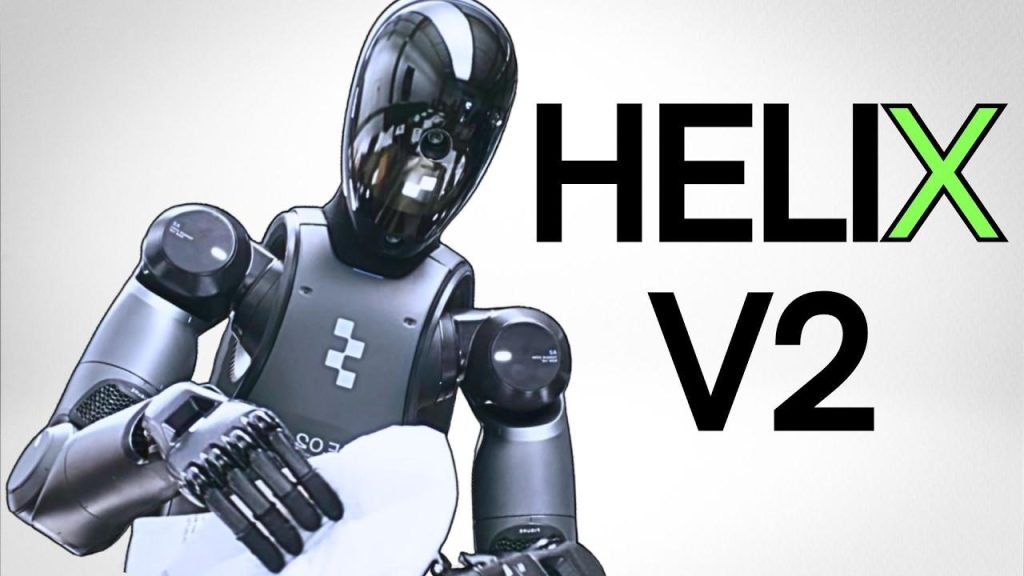In a remarkable leap forward for robotics, Figure AI has unveiled its latest Helix AI system, now capable of outpacing human speed in movement, thanks to a series of groundbreaking technological advancements. The company’s recently released second demo showcases four key innovations, including implicit stereo vision and multiscale visual representation, which enhance the robot’s ability to navigate complex real-world scenarios with unprecedented precision. This marks a significant step closer to artificial general intelligence (AGI) as the Helix S1 demonstrates enhanced spatial awareness and decision-making capabilities previously thought to be exclusive to humans. Tested in rigorous environments, such as logistics operations involving intricate package handling, the Helix system achieved a remarkable 60% increase in efficiency over previous models. As industries increasingly turn to automation, the implications of these advancements raise critical questions about the future of robotics and our relationship with AI.
Revolutionizing Depth Perception with Implicit Stereo Vision
The latest advancements in implicit stereo vision empower the Helix S1 with the ability to interpret depth cues more effectively than ever before. Utilizing refined algorithms, this system processes input from dual camera feeds and synthesizes them to create a 3D visual landscape. This capability allows the robot to accurately gauge distances and navigate through intricate environments with an exceptional degree of agility. Among the standout features are:
- Enhanced Object Recognition: The system can distinguish between similar objects at varying distances effortlessly.
- Real-Time Adaptation: It adjusts its perception based on changing surroundings, ensuring consistent performance.
- Reduced Latency: The lightning-fast processing power significantly lowers response time,enabling quicker decision-making.
Not only does this technology improve operational fluidity, it also reduces the likelihood of accidents during tasks that require precision, such as sorting and package handling in logistics. The implications for industries relying on automated systems are profound, as the robot’s depth perception allows for safer and more efficient workflow management. By integrating this explicit depth awareness into robotics, the Helix S1 sets new benchmarks in automation, promising a future where machines can navigate complex scenarios with human-like dexterity.
Enhancing Control through Multiscale Visual Representation
The Helix S1 employs a sophisticated multiscale visual representation system that vastly improves its operational capabilities across varied contexts. By analyzing visual data at multiple scales, the robot is able to gather a complete understanding of its habitat, resulting in more informed decision-making processes. This advanced capability allows it to together track multiple objects and assess their interactions, effectively optimizing task execution. Key aspects of this functionality include:
- Contextual Awareness: The technology enables the robot to recognize not just individual items but also their relationships and dynamics within the surrounding space.
- Layered Analysis: Different scales of observation provide nuanced insights, aiding in distinguishing key features during complex operations.
- Adaptive Focus: The system can prioritize visual attention based on task demand, ensuring that critical elements are addressed promptly.
This multiscale approach significantly enhances the robot’s ability to operate efficiently in cluttered or unpredictable environments, making it particularly suitable for high-demand industries such as warehousing and manufacturing. With improved situational awareness, the Helix S1 reduces the potential for errors, allowing for seamless workflows where timely and precise actions are paramount. The integration of such advanced visual processing not only showcases technological innovation but also redefines the potential of robotics in everyday applications.
Advancements in Real-World Logistics Applications
The Helix S1’s ability to streamline logistics operations is bolstered by newly developed algorithms that enhance collaborative robotics. This innovation allows multiple units to communicate and coordinate in real time, significantly increasing throughput in environments like warehouses. Some of the pivotal features include:
- Dynamic Task Allocation: The robot can assess its workload and reassign tasks autonomously,ensuring optimal resource utilization.
- Inter-Robot Communication: Enhanced protocols enable the S1 to relay facts to fellow robots,creating a synchronized operation.
- Scalable Workflows: As demand fluctuates, the system automatically adjusts the number of active robots, promoting efficiency without human intervention.
These capabilities pave the way for real-time adaptive logistics networks, allowing industries to respond swiftly to changing demands while minimizing downtime. Moreover, the incorporation of machine learning enables the S1 to continuously improve its operational strategies based on historical performance data, ultimately fostering a smarter, more resilient logistics infrastructure.
Evaluating Progress Toward Artificial General Intelligence
The Helix S1 represents a significant advancement in the quest for artificial general intelligence, particularly through its ability to learn and adapt rapidly while operating in unpredictable settings. It incorporates advanced machine learning techniques that allow the robot to draw on vast datasets, accelerating the learning process and enhancing its robotic capabilities.Key features of its learning module encompass:
- Continuous Learning: The S1 updates its knowledge base in real time, integrating new experiences into its operational framework.
- Contextual Learning: Understanding the implications of its interactions allows the robot to tailor its responses based on past performance.
- Predictive Analytics: By forecasting potential operational challenges, it preemptively adjusts strategies to mitigate risks.
This blend of learning strategies positions the Helix S1 at the forefront of robotic autonomy, moving toward systems that not only perform tasks but also exhibit reasoning akin to human thought processes. Furthermore, the robot’s collaborative interface means it can exchange insights with other AI systems, refining its operations through shared data networks. Such capabilities signal a transformative shift, enhancing the efficiency and effectiveness of robotics across various industries and propelling us closer to achieving a functional artificial general intelligence.























